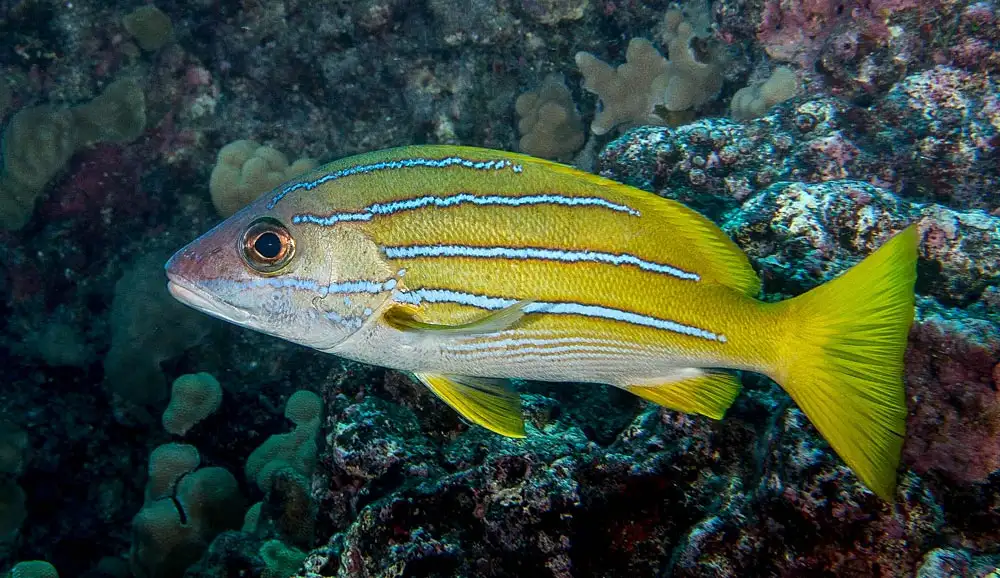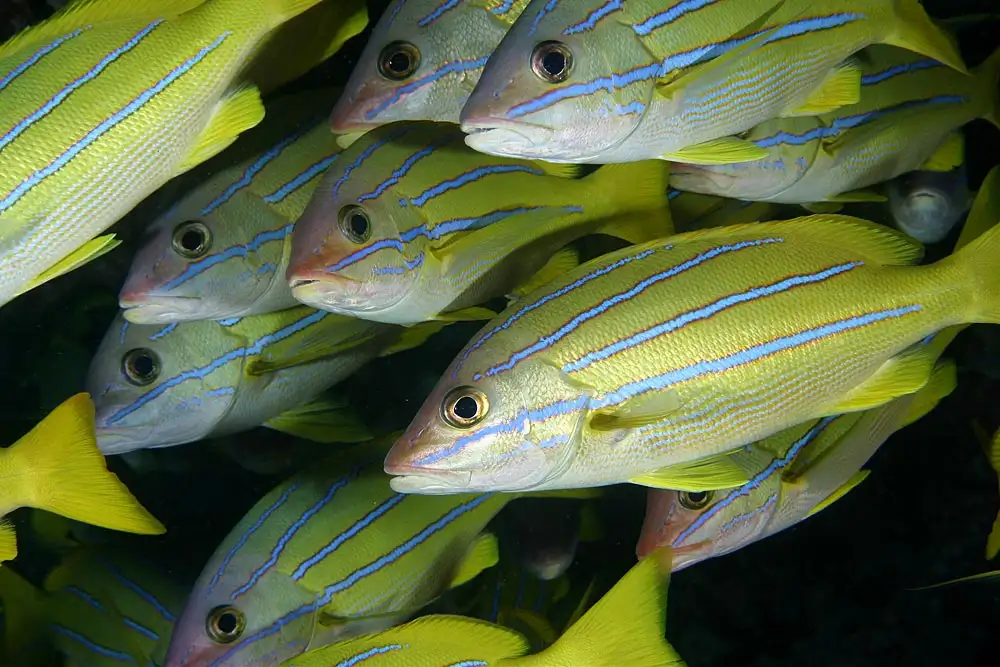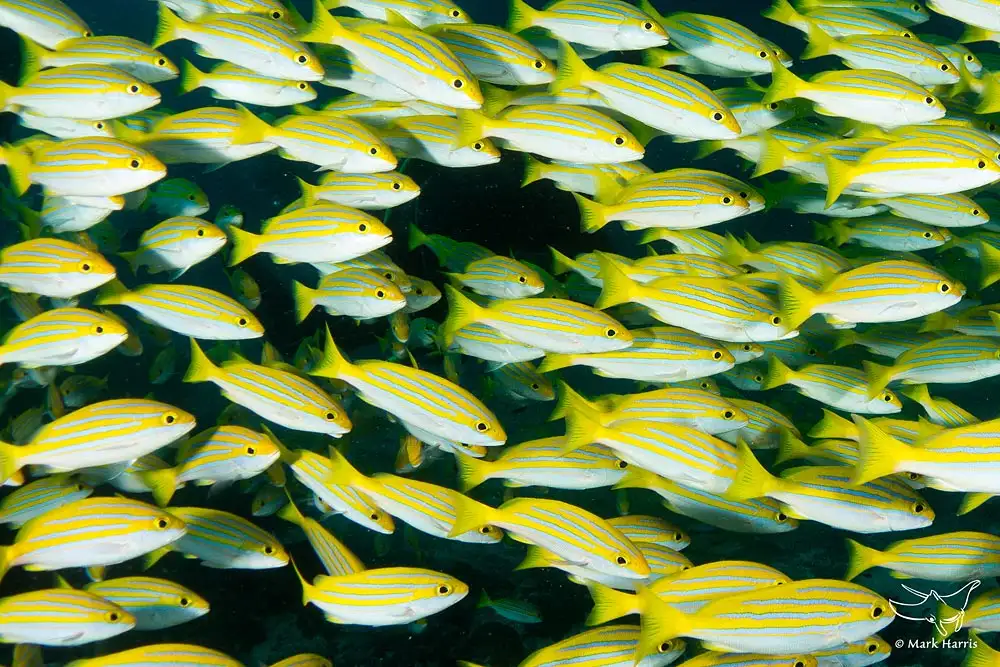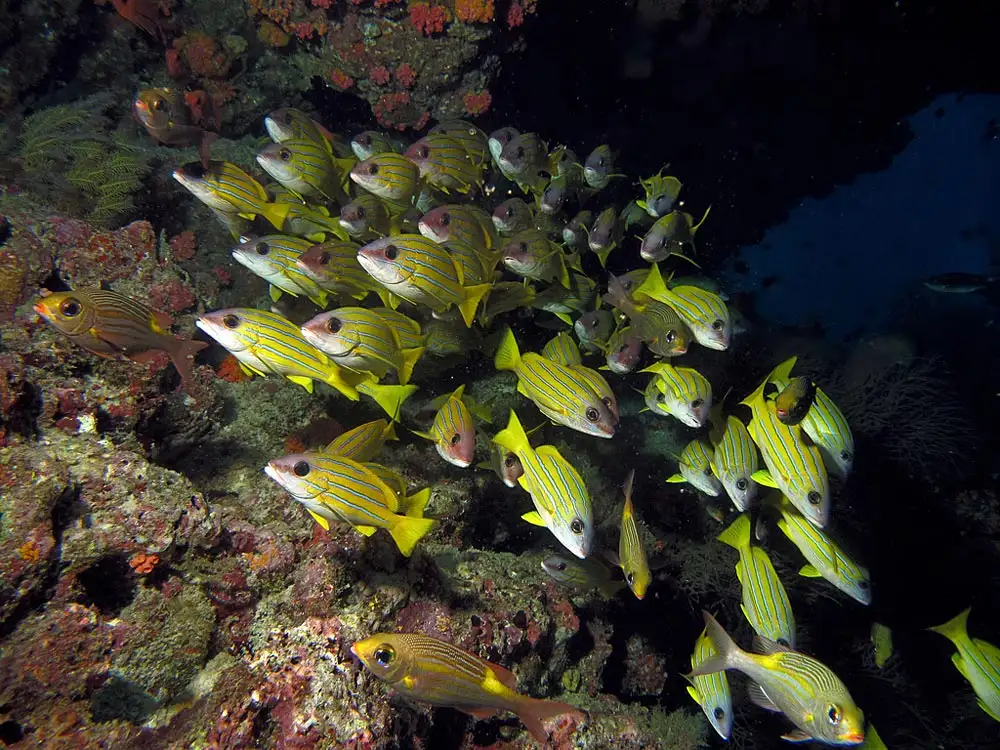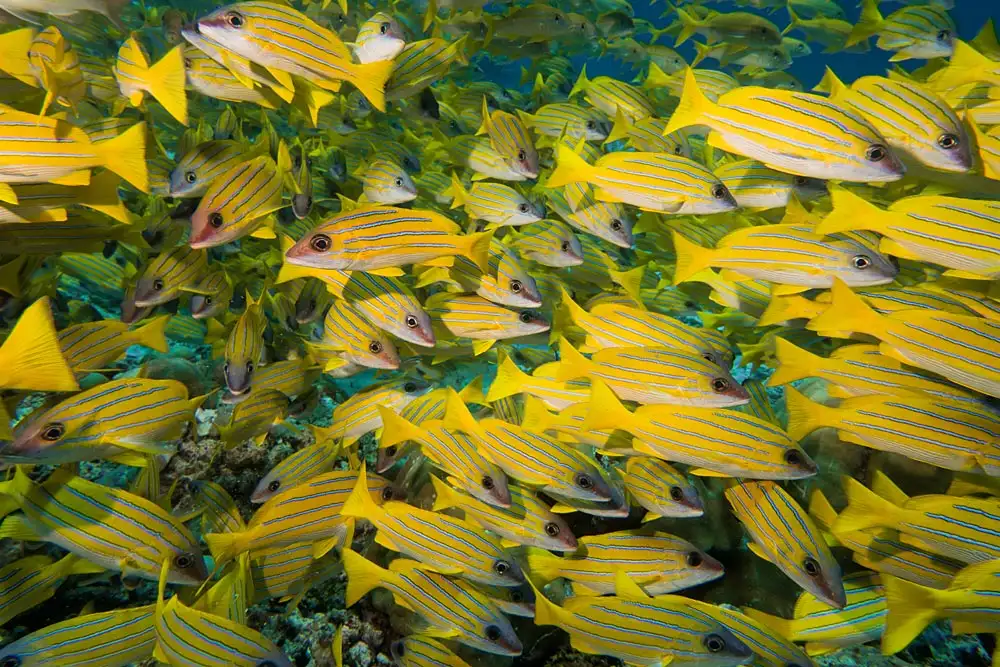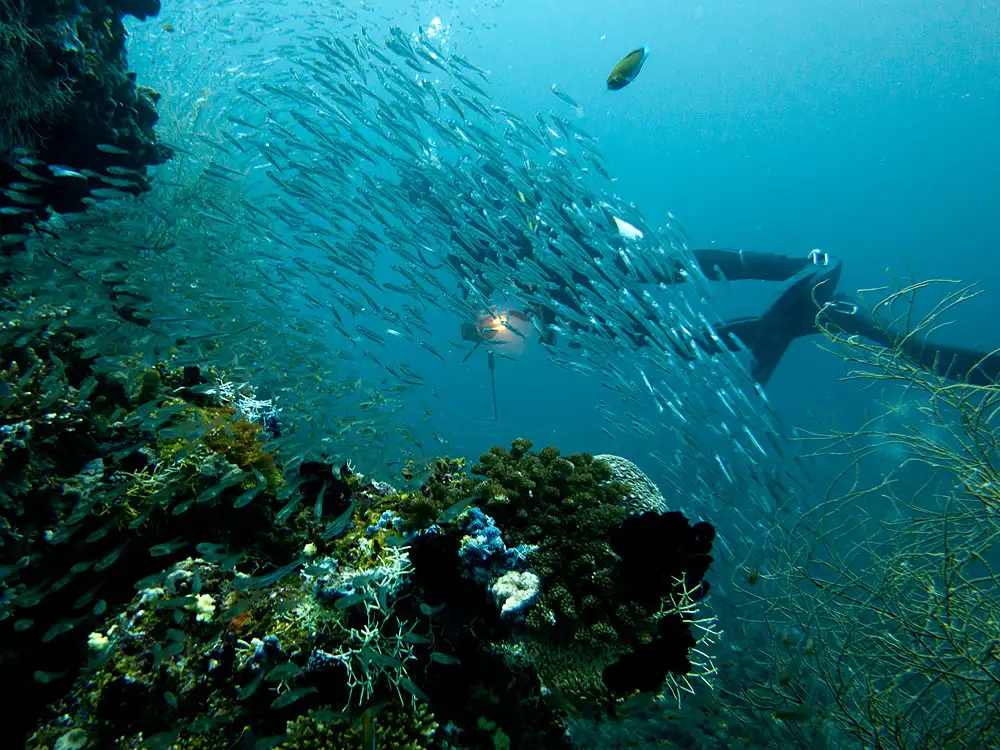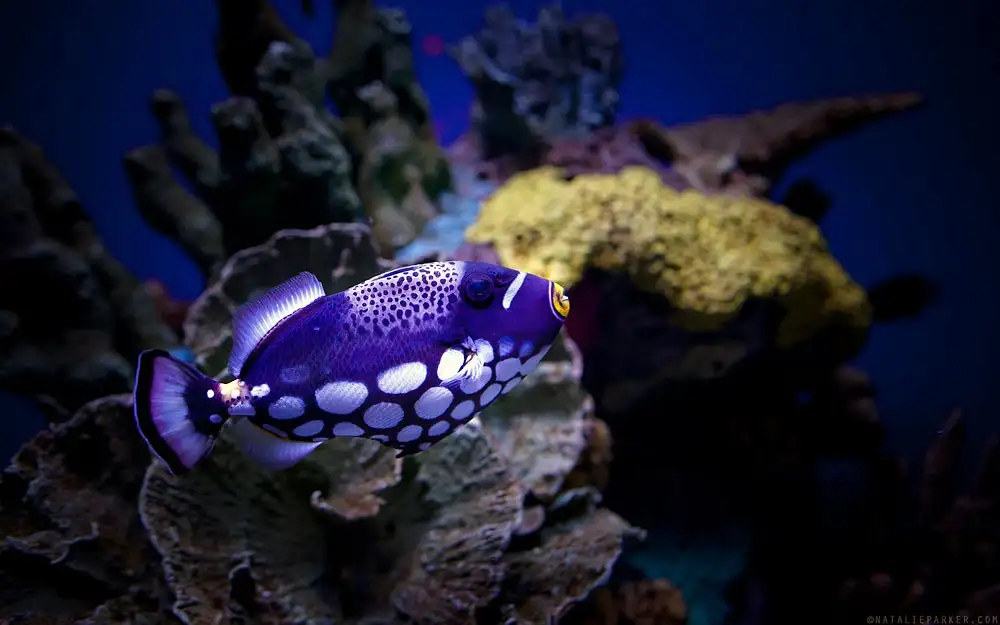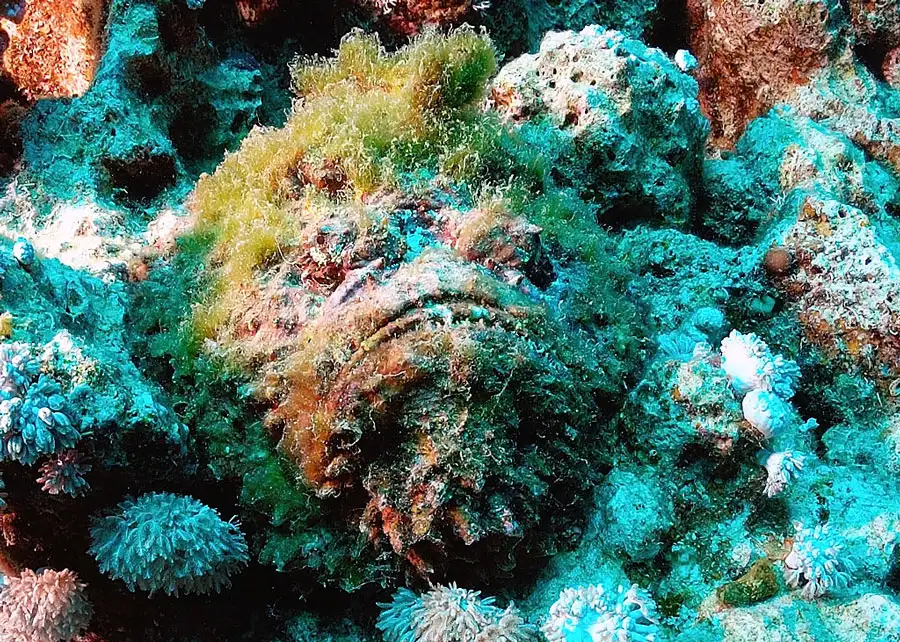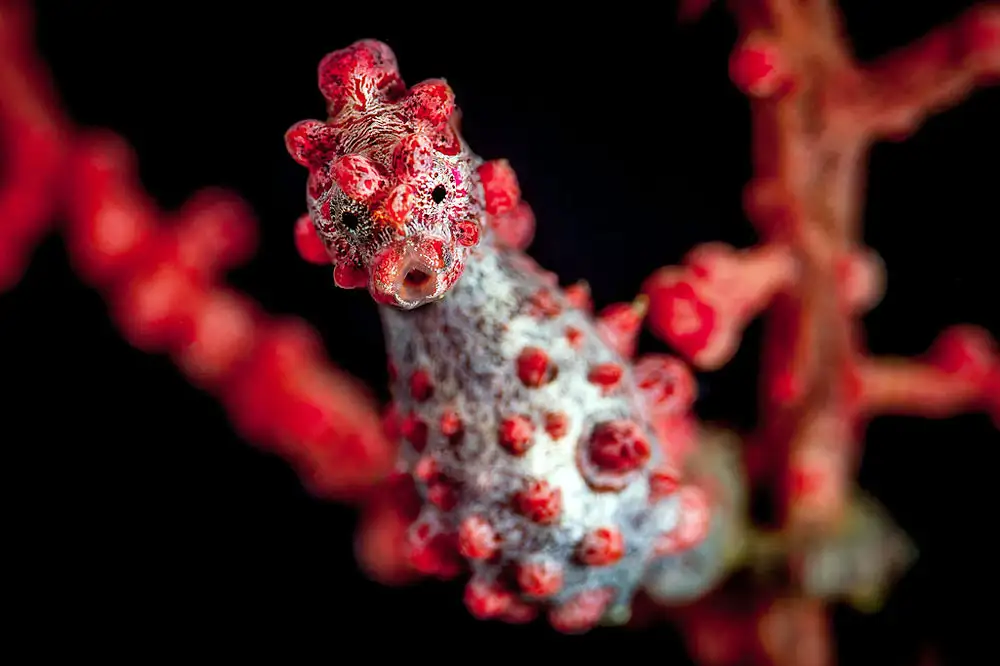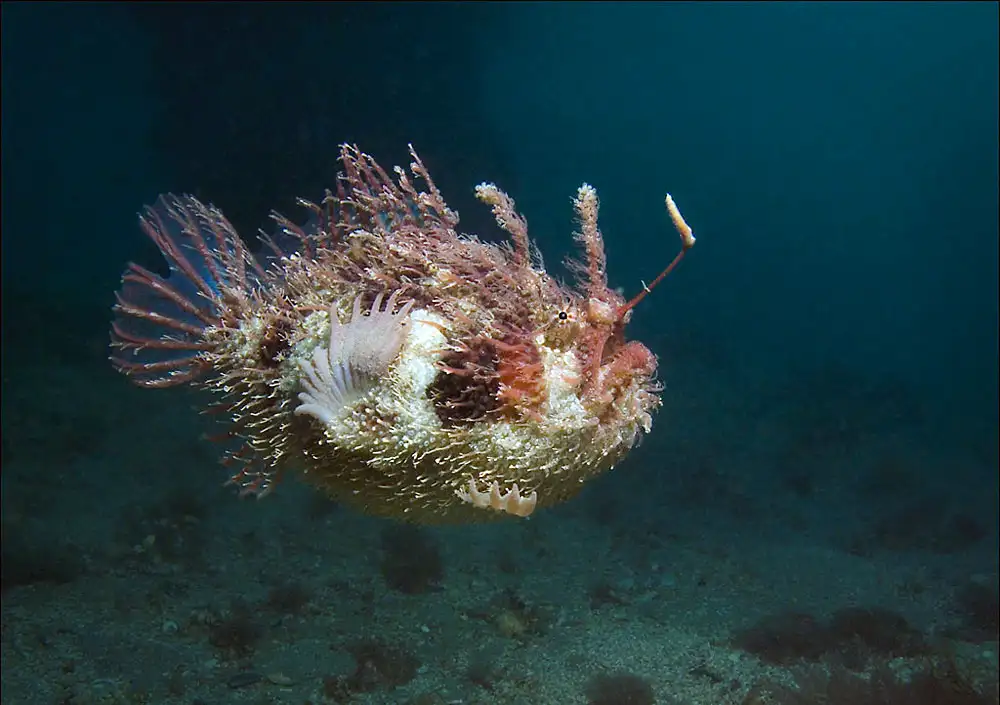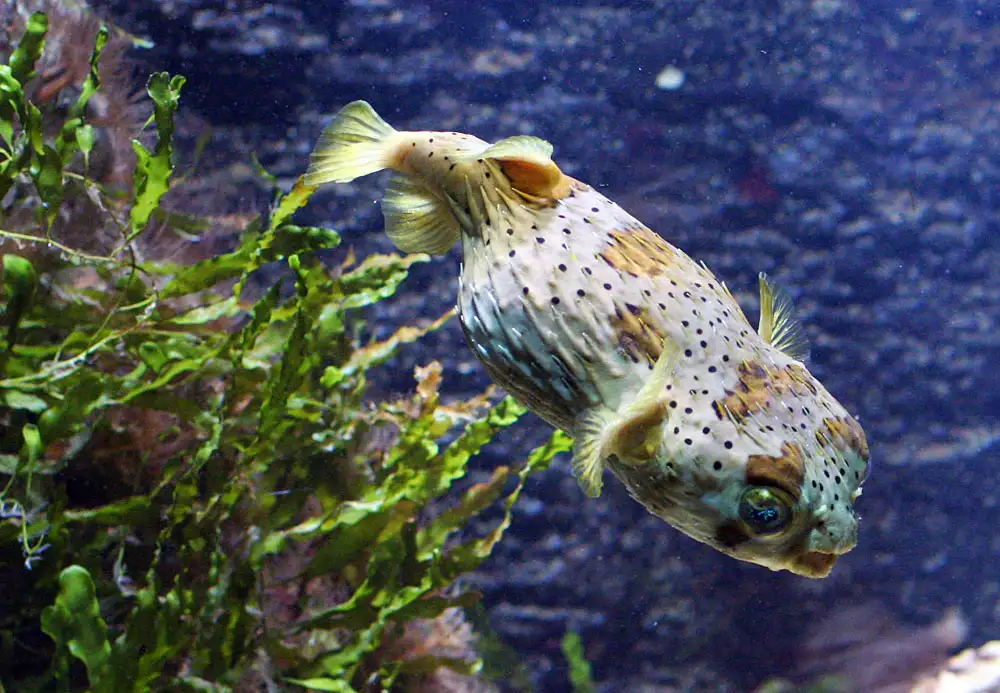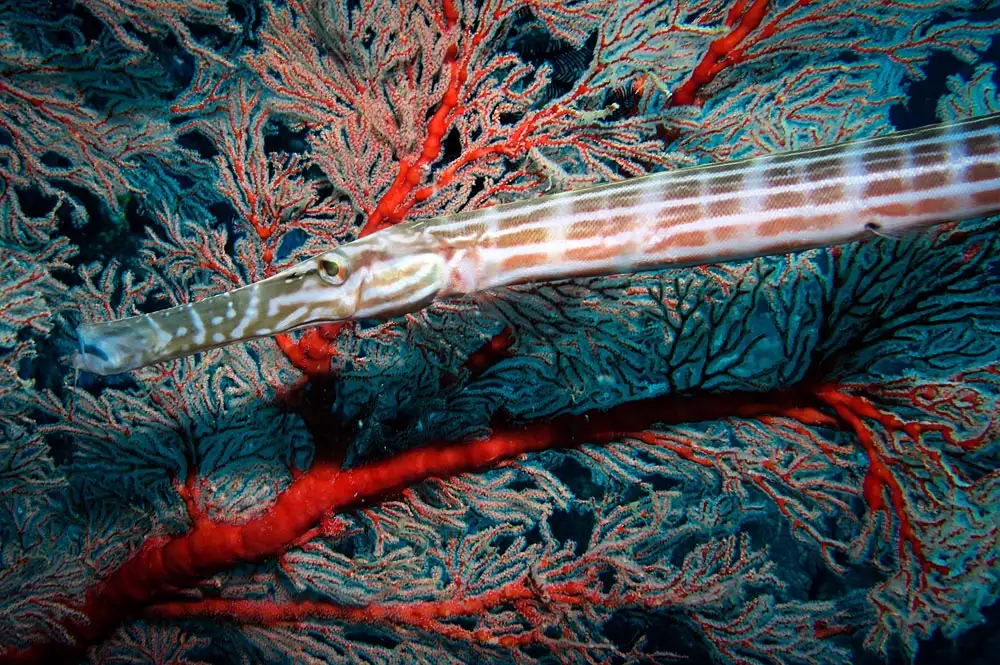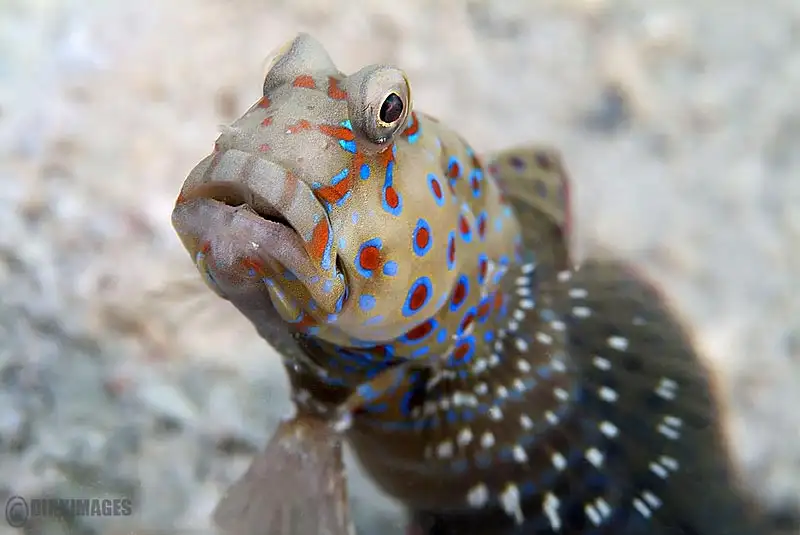Lutjanus quinquelineatus (Five‑lined Snapper)
IUCN
LCBasic Information
Scientific classification
- name:Lutjanus quinquelineatus (Five‑lined Snapper)
- Scientific Name:Lutjanus quinquelineatus
- Outline:Small fish
- Family:Lutjanidae Lutjanus
Vital signs
- length:Typically 20–30 cm; max ~38–40 cm
- Weight:Varies with size; small‑to‑medium reef fish
- lifetime:Around 10–15 years
Feature
Five flank stripes; daytime schooling and nocturnal foraging; pelagic spawning; juveniles in lagoons/seagrass.
Distribution and Habitat
Indo‑West Pacific reefs: slopes, crests, outer walls and lagoons (3–60 m).
Appearance
Moderately deep, compressed body; continuous dorsal; forked tail; fine head speckles; terminal mouth.
Details
Lutjanus quinquelineatus—the five‑lined snapper—is a common Indo‑Pacific reef snapper of the familyLutjanidae. It bears five parallel longitudinal stripes along the flanks, forms conspicuous daytime schoolsat cave mouths/reef slopes, and disperses at dusk to feed on crustaceans and small fishes.
Ecology & Biology
Diet: small fishes, shrimps/crabs, amphipods and polychaetes—predominantly carnivorous in adults.
Behaviour: schooling by day, nocturnal foraging after dusk.
Reproduction: pelagic broadcast spawner; pelagic eggs/larvae, with juveniles using lagoons, seagrass or shallow reef flats.
Identification
Pattern: exactly five clean stripes (key vs. L. kasmira with typically four bluish stripes).
Form: moderately deep, laterally compressed; continuous dorsal fin (spiny + soft); deeply forked caudal fin.
Head: fine speckles/short oblique marks sometimes visible dorsally; large eye; terminal mouth.
Size & Longevity
Length: typically 20–30 cm, maximum about ~38–40 cm.
Life: around 10–15 years depending on population.
Range & Habitat
Tropical Indo‑West Pacific: Indonesia, Philippines, Papua New Guinea, Solomon Islands, Micronesia, and Australia’s Great Barrier Reef, among others. Occurs on reef slopes, crests, outer walls and lagoons from roughly 3–60 m.
Conservation & People
Fisheries: regional food and sport fish; note ciguatera risk in some reef areas.
Status: populations are generally stable but affected by habitat degradation and overfishing; MPAs benefit schools.
IUCN: Least Concern (LC) (subject to latest assessment).
FAQ
Q1. How to tell it from bluestripe snapper (L. kasmira)? L. quinquelineatus shows five stripes; L. kasmira usually has four brighter bluish stripes.
Q2. Is it dangerous? No; it is a mid‑sized predatory fish that avoids divers.
Q3. Why is it seen in large schools? Schooling offers predator avoidance and foraging efficiency; schools rest near caves or ledges by day.
Q4. Is it safe to eat? Depends on locality—ciguatera may occur in some reefs; follow local advisories.

